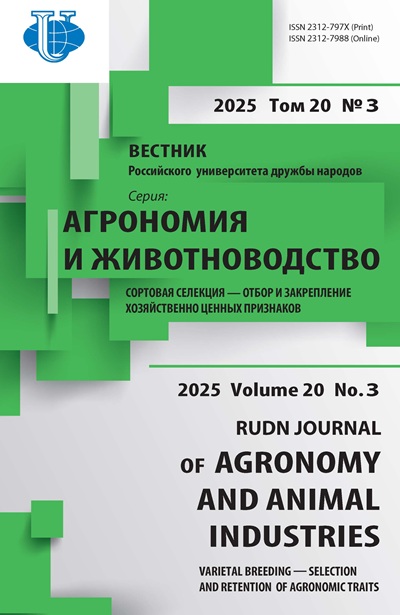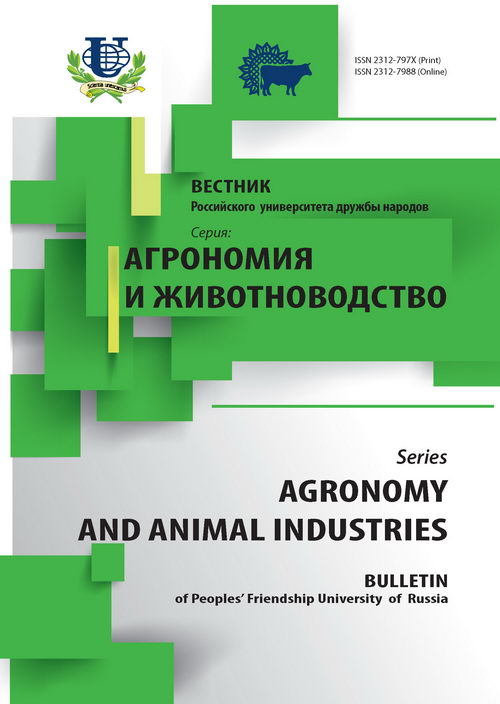Сравнительный анализ физиологических механизмов солеустойчивсти различных сортов горчицы
- Авторы: Гринин АЛ1, Коршунов ИА1, Холодова ВП1, Кузнецов В.В1
-
Учреждения:
- Институт физиологии растений им. К.А. Тимирязева РАН
- Выпуск: № 1 (2010)
- Страницы: 27-38
- Раздел: Статьи
- URL: https://agrojournal.rudn.ru/agronomy/article/view/1390
- ID: 1390
Цитировать
Полный текст
Аннотация
Ключевые слова
Об авторах
А Л Гринин
Институт физиологии растений им. К.А. Тимирязева РАНИнститут физиологии растений им. К.А. Тимирязева РАН
И А Коршунов
Институт физиологии растений им. К.А. Тимирязева РАНИнститут физиологии растений им. К.А. Тимирязева РАН
В П Холодова
Институт физиологии растений им. К.А. Тимирязева РАНИнститут физиологии растений им. К.А. Тимирязева РАН
Вл В Кузнецов
Институт физиологии растений им. К.А. Тимирязева РАНКафедра ботаники, физиологии,патологии растений и агробиотехнологииРоссийский университет дружбы народовул. Миклухо-Маклая, 8/2, Москва, Россия, 117198; Институт физиологии растений им. К.А. Тимирязева РАН
Список литературы
- Картамышев В.Г. Генетика, селекция и семеноводство масличных культур. - Ростов-на-Дону: Изд-во ЮНЦ РАН, 2008.
- Генкель П.А. Солеустойчивость растений и пути ее направленного повышения (Тимирязевские чтения XII, 4 июня 1950 г.). - М.: Изд-во Акд. наук СССР, 1954.
- Flowers T.J. Improving Crop Salt Tolerance // J. Exp. Botany. - 2004. - V. 55. - P. 307-319.
- Kumar G., Purty R.S., Sharma M.P., Singla-Pareek S.L., Pareek A. Physiological responses among Brassica species under salinity stress show strong correlation with transcript abundance for SOS pathway-related genes // Journal of Plant Physiology. - 2009. - V. 166. - P. 507-520.
- Кузнецов Вл.В., Шевякова Н.И. Пролин при стрессе: биологическая роль, метаболизм, регуляция // Физиол. растений. - 1999. - № 46. - С. 321-336.
- Bates L.S., Waldren R.P., Teare I.D. Rapid determination of free proline for water-stress studies // Plant and Soil. - 1973. - V. 39. - P. 205-207.
- Mattioni C., Lacerenza N.G., Troccoli A., De Leonardis A.M., Di Fonzo N. Water and salt stress-induced alterations in proline metabolism of Tritictim durum L. seedlings // Physiol. Plant. - 1997. - V. 101. - P. 787-792.
- Ashraf M., McNeilly T., Nazir M. Comparative salt tolerance of amphidiploid and diploid Brassica species // Plant Sci. - 2001. - V. 160. - P. 683-689.
- Armengaud P., Thiery L., Buhot N., Grenier-De March G., Savoure A. Transcriptional regulation of proline biosynthesis in Medicago truncatula reveals developmental and environmental specific features // Physiol. Plant. - 2004. - V. 120 - P. 442-450.
- Kumar D. Salt tolerance in oilseed brassicas - present status and future prospects // Plant Breed. Abst. - 1995. - V. 65. - P. 1438-1447.
- Kavi Kishor P.B., Sangam S., Amrutha R.N., Srilakshmi P., Naidu K.R, Rao K.R.S.S., Sreenath Rao, Reddy K.J., Theriappan P., Sreenivasalu N. Regulation of proline biosynthesis, degradation, uptake and transport in higher plants. Its implications in plant growth and abiotic stress tolerance // Current Sci. - 2005. - V. 88 (3). - P. 424-436.
- Gagneul D., Aïnouche A., Duhazé C., Lugan R., Larher F.R., Bouchereau A. A Re-assessment of the Function of the So-Called Compatible Solutes in the Halophytic Plumbaginaceae Limonium latifolium // Plant Physiol. - 2007. - Vol. 144 (3) - P. 1598-1611.
- Hellmann Н., Funck D., Rentsch D., Frommer B.W. Hypersensitivity of an Arabidopsis sugar signaling mutant toward exogenous proline application // Plant Physiol. - 2000. - Vol. 122. - P. 357-368.
Дополнительные файлы















